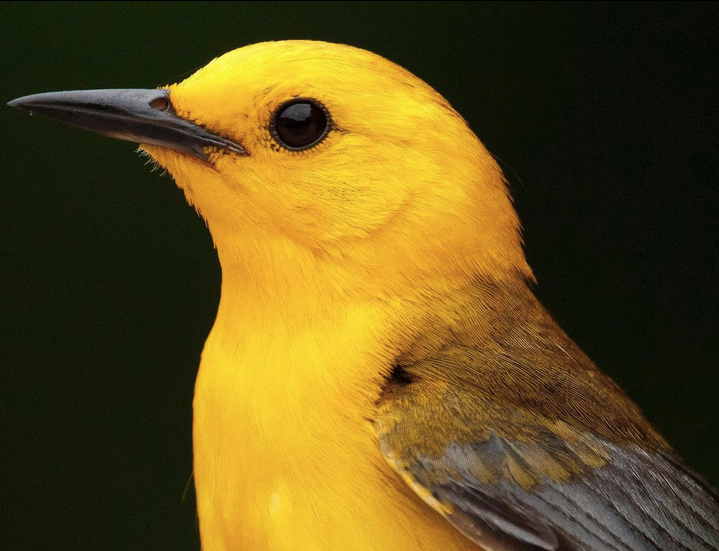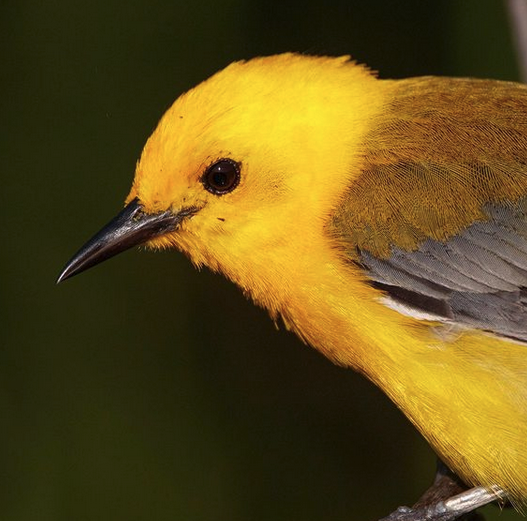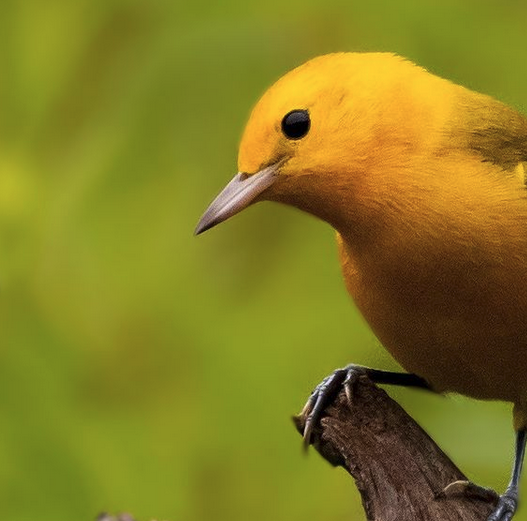By Sally Siko
Autumn is here. Signs of change are everywhere if you know where to look. From flocking Canada Geese to molting plumage, if they hav’nt left already birds everywhere are preparing themselves for the migration journey ahead. Some changes aren’t so obvious, yet if you take the time to look closely you’ll be able to pick up on the seasonal cues even before cold weather arrives. Case in point, the beak color of a Prothonotary Warbler.
During the spring & summer this warbler has a bright black beak. In autumn and winter it is a tan color.The change happens quickly too!


I took the series of photos (shown above) of a Prothonotary with the black beak (featured in the first photos) in June.
The second group of photos (below) shows a Prothonotary with the tan beak in late August. Can you see the difference?


But how does a Prothonotary Warblers beak change color?Their beak is covered in keratin, the same substance from which our hair and fingernails are made from.Under the beak’s layer of keratin lies a bony structure. While the bone makes up the foundation, it’s covered with a layer of living tissue which, in turn, is coated with a thin layer of see-through keratin. These living cells can change color, and the color shows through the keratin.Seasonal color changes to the living tissue in their bills occur due to fluctuations in the birds hormone levels and diet throughout the year.
Now that the Prothonotary’s breeding season has ended, their hormones levels have changed again so their beaks have returned to a light tan color. These beauties have mostly departed for their wintering grounds in Central America and northern regions of South America. No worries though, you can find them them here in the Tarheel state when they return in April.
Photos by @sally_siko of @bestlife_birding on my beloved full frame 50MP beast, the mighty @canonusa #5Ds


